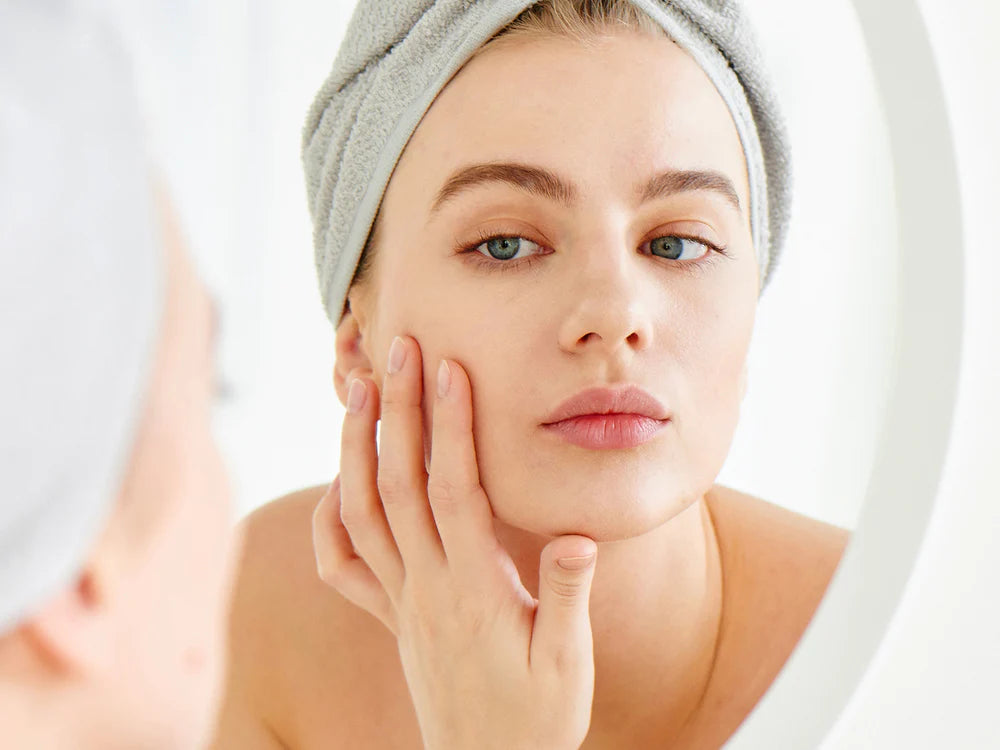
Fungal Folliculitis
What is Fungal Folliculitis?
Fungal folliculitis, also known as fungal acne or pityrosporum folliculitis, is a skin infection affecting hair follicles. It occurs when hair follicles become inflamed due to an overgrowth of yeast or fungus, specifically the Malassezia species. This condition typically presents as small, itchy, red bumps or pustules that resemble acne, but unlike traditional acne, fungal folliculitis is caused by a yeast overgrowth rather than bacteria. It commonly occurs on the chest, back, shoulders, and upper arms, with increased sebum production and warmth, creating an ideal environment for fungal growth. Fungal folliculitis can be triggered by excessive sweating, humid environments, hormonal changes, and certain medications. Treatment usually involves antifungal medications, topical or oral, to target the underlying yeast infection and alleviate symptoms.
Types of Fungal Acne
Your skin is home to many yeasts that coexist with you.
- Pityrosporum is a yeast that could be a reason your acne doesn’t go away. Pityrosporum folliculitis lacks comedones, which are the whiteheads and blackheads that are common characteristics of acne. It can also be a very itchy condition, while acne is not.
- Malassezia is a fungal condition commonly misdiagnosed as acne vulgaris. Malassezia folliculitis results from the overgrowth of yeast. The most common presentation is papules and pustules, often on the chest, back, arms, and face.
What Causes Fungal Folliculitis?
Fungal folliculitis, or fungal acne, is primarily caused by an overgrowth of yeast or fungi in the hair follicles. Several factors contribute to the development of fungal folliculitis, including:
- Humidity and Heat: Warm, humid environments create favorable conditions for yeast or fungi to thrive, leading to an increased risk of folliculitis.
- Excessive Sweating: Perspiration can create a moist environment on the skin, providing an ideal breeding ground for fungi like Malassezia.
- Compromised Immune Function: Individuals with weakened immune systems are more susceptible to fungal infections, including folliculitis.
- Hormonal Changes: Fluctuations in hormone levels, such as during puberty, pregnancy, or menstruation, can contribute to the development of fungal folliculitis.
- Occlusive Clothing: Wearing tight or non-breathable clothing can trap sweat and moisture against the skin, promoting fungal growth and increasing the risk of folliculitis.
- Prolonged Antibiotic Use: Antibiotics can disrupt the balance of microorganisms on the skin, including beneficial bacteria that help keep yeast or fungi in check, leading to an overgrowth of Malassezia.
- Use of Oily Skincare Products: Certain skincare products, particularly those containing oils or fatty acids, can provide nutrients for fungal growth and exacerbate fungal folliculitis.
Overall, maintaining good hygiene, wearing breathable clothing, and avoiding prolonged exposure to warm, humid environments can help prevent fungal folliculitis.
What Does Fungal Folliculitis Look Like?
Fungal folliculitis presents as small, itchy bumps on the skin. These bumps can vary in appearance but often resemble traditional acne lesions. The symptoms of fungal folliculitis can vary depending on the severity of the condition. Common symptoms include:
- Small Bumps: Fungal folliculitis typically presents as small, itchy bumps on the skin. These bumps may be red, pink, or flesh-colored and can resemble traditional acne lesions.
- Pustules: Some bumps may contain pus, giving them a white or yellowish appearance. These pustules may be tender or painful to the touch.
- Itchiness: Fungal folliculitis often causes itching or discomfort in the affected areas. Scratching the bumps can lead to further irritation and inflammation.
- Clustering: The bumps may cluster together in patches or be scattered across the skin, depending on the extent of the folliculitis.
- Distribution: Fungal folliculitis commonly affects areas with a high density of hair follicles, such as the chest, back, shoulders, and upper arms. However, it can occur anywhere on the body where hair follicles are present.
- Worsening with Heat and Sweat: Symptoms may worsen in warm, humid environments or with increased sweating, as these conditions promote fungal growth.
- Persistence: Unlike traditional acne, fungal folliculitis may persist or worsen despite conventional acne treatments. This is because it is caused by an overgrowth of yeast or fungi rather than bacteria.
How Do You Get Rid of Fungal Folliculitis?
To effectively treat fungal folliculitis, it's crucial to address the underlying fungal overgrowth in the hair follicles. Here are several approaches to help get rid of fungal folliculitis:
- Proper Hygiene: Maintaining good hygiene practices can help prevent further fungal growth and reduce the risk of recurrence. This includes using a gentle, pH-balanced cleanser to keep the affected areas clean. Avoid harsh or abrasive cleansers, as they can irritate the skin.
- Avoid Moisture and Humidity: Fungi thrive in warm, humid environments, so minimizing moisture and humidity can help prevent fungal folliculitis from worsening. Keep affected areas clean and dry, and avoid wearing tight or non-breathable clothing that traps sweat against the skin.
- Dietary Changes: Studies suggest that dietary factors, such as consuming excessive sugars or carbohydrates, may contribute to fungal overgrowth on the skin. Making dietary modifications, such as reducing sugar intake and incorporating more probiotic-rich foods, may help balance the skin's microbiome and prevent fungal folliculitis.
- Avoid Irritating Products: Certain skincare products, such as oily or comedogenic cosmetics, may exacerbate fungal folliculitis by providing nutrients for fungal growth. Avoid using products that contain oils or ingredients that may clog pores and worsen symptoms.
Overall, treating fungal folliculitis requires a comprehensive approach that addresses the underlying fungal overgrowth while also minimizing factors that contribute to its development and recurrence. With proper treatment and management, fungal folliculitis can be effectively controlled and prevented from recurring.






